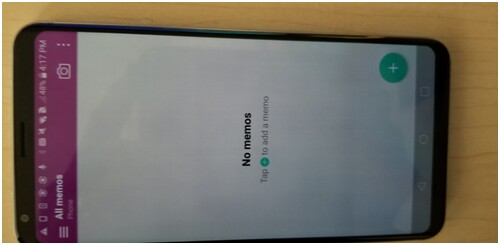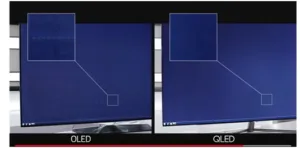With the release of the iPhone X, Apple expects color and hue shifting at off-angles as a characteristic of the OLED display. Apple also says iPhone X has the best OLED display in the industry with the Super Retina display, but burn-in can still occur under certain circumstances.

Moreover, since the Google Pixel 2 XL arrived, reviewers have been laying into the pOLED display built by LG. The issues are related to overall quality and the level of detail present on the display when it is active. But Google has a solution, apparently, and it will be coming via a software update very soon. Here’s their official line:
“On the topic of color saturation, we designed the Pixel 2 XL to take advantage of multiple facets of the innovative new pOLED technology, including QHD+ resolution with 538 pixels per inch and a wide color gamut. One of our design intents was to achieve a more natural and accurate rendition of colors. We know that some people prefer more saturated colors, so both Pixel 2 phones already include an option to boost colors by 10% for a more vivid look. And based on the recent feedback, we’re adding a new mode for more saturated colors, which will be made available via a software update to both Pixel 2 phones in the next few weeks.”
Google isn’t admitting there are issues with the display per se; rather, it is suggesting that its choice to use a more natural palette of display color might not have worked as planned. The other issue, which can’t be fixed via a software update, is the build up of reports of screen burn-in on certain units. Google has commented on this:
“Pixel 2 XL display shows that its decay characteristics are similar to OLED panels used in comparable products.”
Basically, Google is saying that image sticking comes with OLEDs and the user will just have to live with it. In order to get around any potential PR disasters, Google is now offering a two-year warranty on all Google Pixel handsets, so if something does happen to the handset’s display, it’s covered. The update for the display should be landing within the next couple of weeks. Below are three examples of burn-in (image sticking, mura and pixel ageing)
TV Image Retention Comparison – Source:Samsung
![]() Figure 2: Pixel 2L (Burn-in at Bottom with Navigational Buttons) – Source:CNet
Figure 2: Pixel 2L (Burn-in at Bottom with Navigational Buttons) – Source:CNet
 Figure 3: V30 @ 5% Luminance (Showing Mura) – Image:OLED-A
Figure 3: V30 @ 5% Luminance (Showing Mura) – Image:OLED-A
LG & Samsung Taking Shortcuts
By taking shortcuts in solving the image-sticking, burn-in and aging issues associated with the OLED emissive display, Samsung and LG have opened-up the industry to unnecessary criticism, just as the technology is becoming pervasive, at least for smartphones. Samsung has even used the OLED aging characteristic as a selling point for QLED over OLED TVs.
LG released the TVs knowing they had a problem and offered a solution that required the user to turn off/on the TV in order to cure the aging. Samsung jumped in and compared an LCD and an OLED after running a video that caused image sticking without allowing the OLED TV to reboot.
Both LG and Samsung had plasma display plants that failed, where one of the reasons was they never overcame the stigma of image sticking, even though the problem had long been resolved. Now, they are going down the same path and Samsung is driving the issue even though it has by far the largest investment in OLEDs and the most to lose.
The cure is to measure in real-time, the performance of each OLED and compensate for any current changes due to aging. There are proven, comprehensive solutions available that actually lower the power, increase the lifetime, and treat any type of aging artifact but it requires that the TCON, Driver IC and pixel circuit be modified. These changes don’t really increase the cost of the display and they do involve additional engineering and time. But we ask all of the companies involved in producing OLEDs, why invest $4 billion for a 6th Gen Fab with 15,000 substrates/mo capacity and deliver a sub-standard product? – Barry Young
Barry Young is Chairman of the OLED Association and a board member at Ignis Innovation, a developer of compensation technologies for OLEDs He was an SVP at DisplaySearch from 1995 to 2007.
Analyst Comment
I’m not entirely sure that I agree with Barry’s comment that the problem of image burn on PDPs was ever fully solved, although ways of mitigating the effects were developed. In fact, I remember being in the Las Vegas Country Club, behind the Convention Center, where I met with Samsung SDI, who explained to me that the problem was solved. However, the company’s logo was burned into the PDPs that it was showing! Nevertheless, Young is right that techniques are around to minimise these issues and we reported on the technology from Ignis (whose board Young is on) a couple of years ago. (Can Ignis Enable the OLED TV Market?) (BR)

